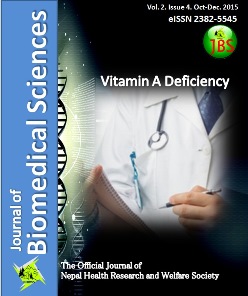Understanding intrauterine growth restriction (IUGR): a review
DOI:
https://doi.org/10.3126/jbs.v2i4.15426Keywords:
Intrauterine growth restriction, low birth weight, oxidative stress, pharmacological treatment, risk factorsAbstract
Intrauterine Growth Restriction (IUGR) is defined as the inability of a fetus to gain the normal growth potential due to maternal-placental-fetal factors. These factors mainly involve metabolic disorders, infections, substance abuse and exposure to harmful substances. Incidence of IUGR is higher in developing countries. Proper diagnosis at suitable time is necessary for proper treatment and management. Although, the mechanism is not clear but oxidative stress, immunological factors, aryl hydrocarbon receptor and adduct formation are some pathways which are involved in IUGR. The aftermaths of IUGR involves post-birth complications, perinatal mortality and morbidity. Therefore, management and treatment involves use of both pharmacological (Tocolytics, Corticosteroids, antibiotics) and non-pharmacological methods (bed rest, cerclage). This review highlights the possible risk factors, mechanisms, other biochemical pathways involved, as well as pharmacological and non-pharmacological management of IUGR.
Journal of Biomedical Sciences. 2015;2(4):31-37
Downloads
1554
1203




